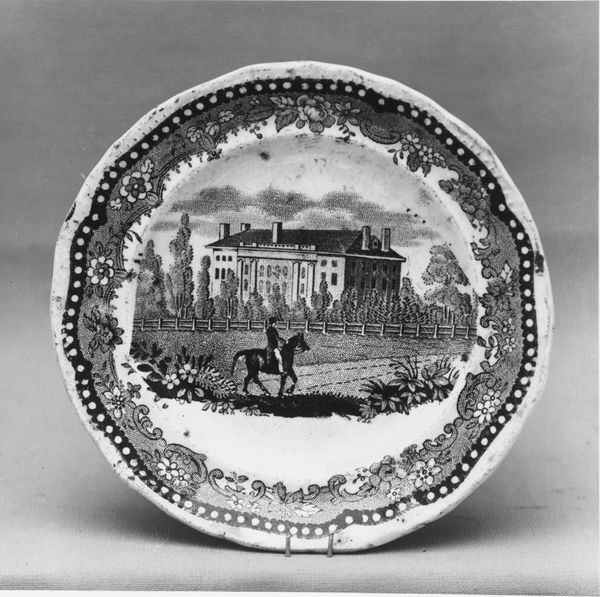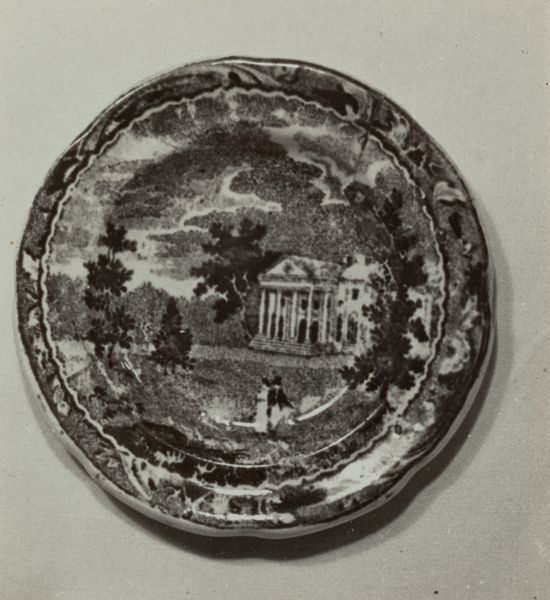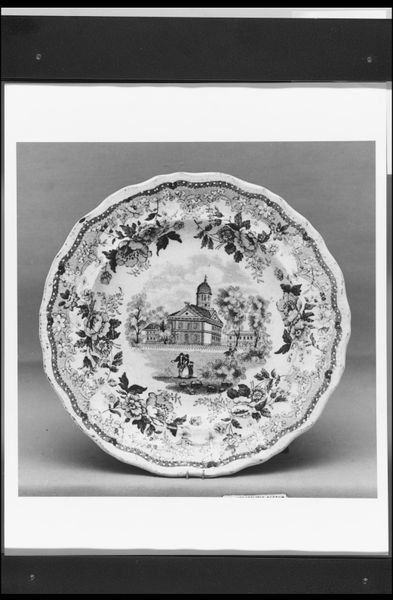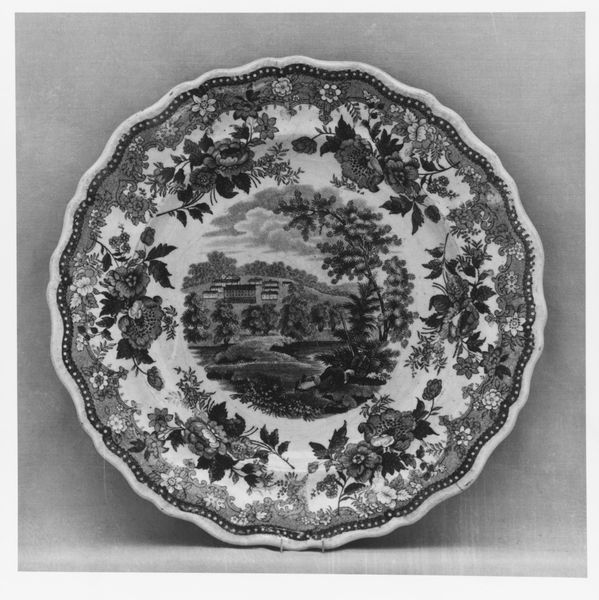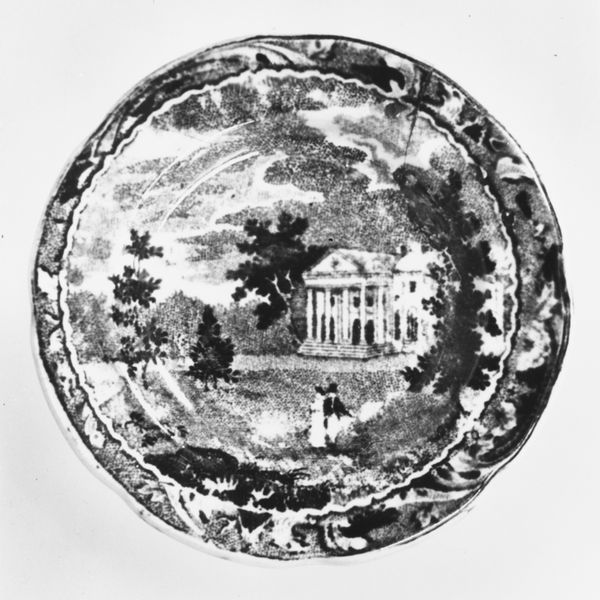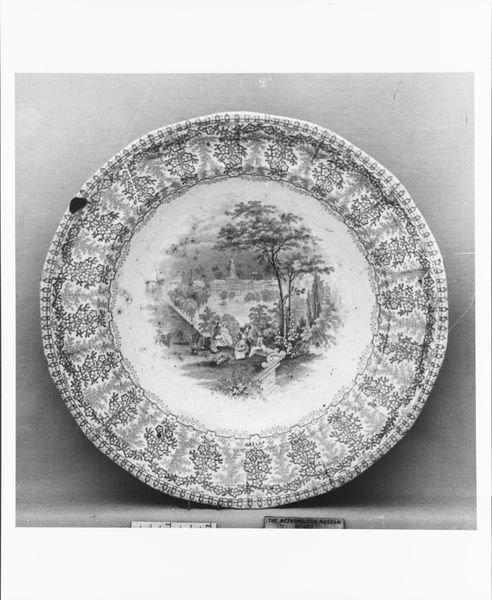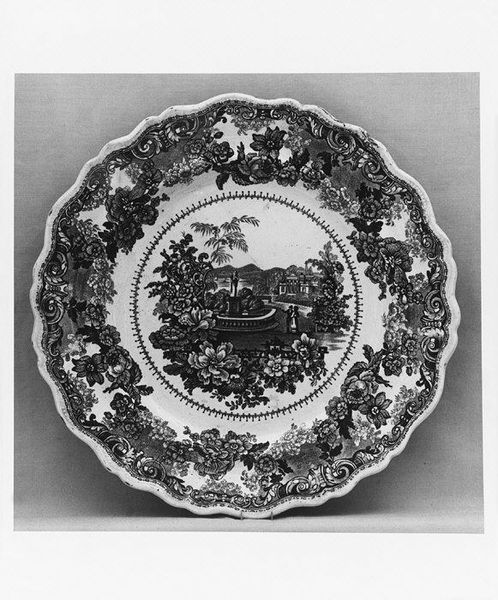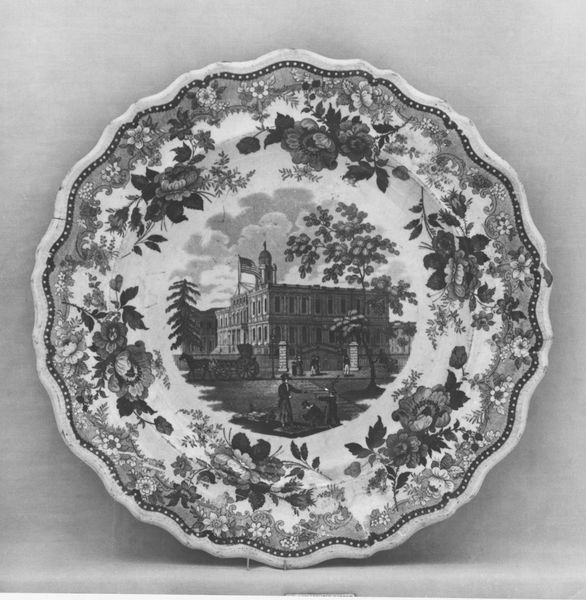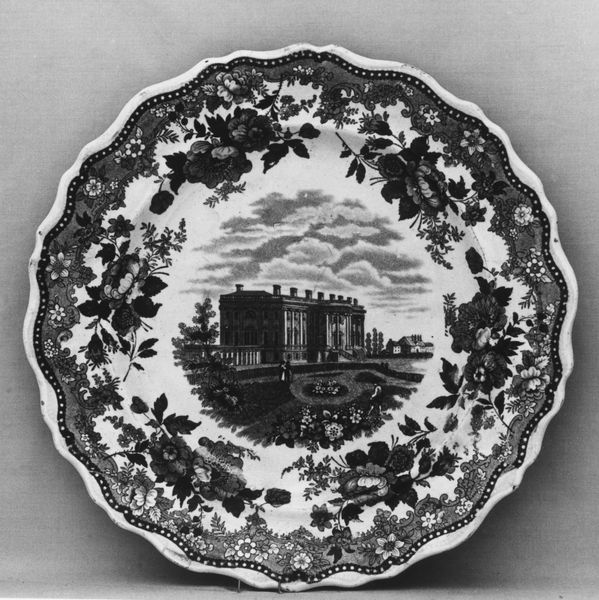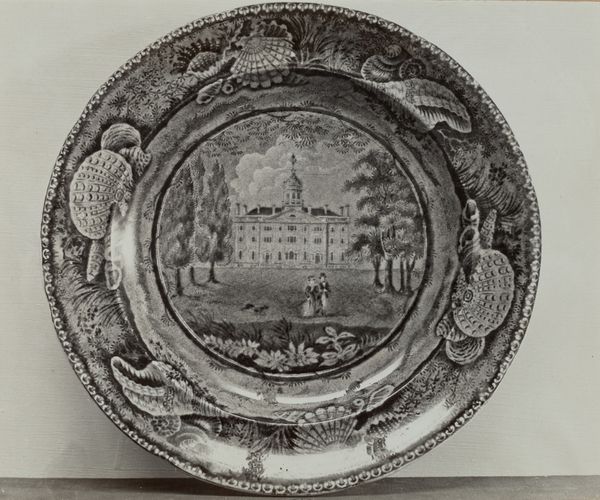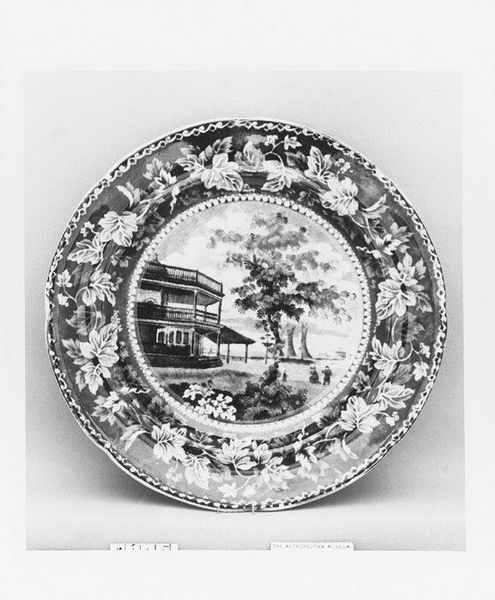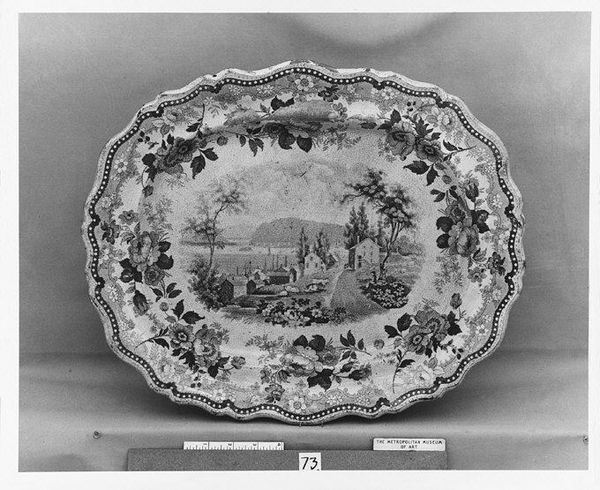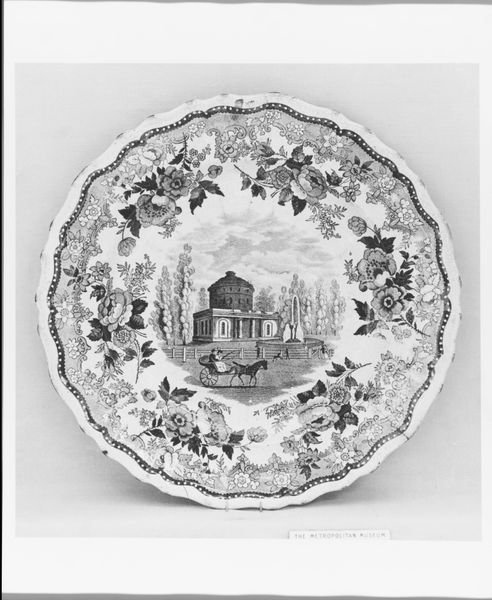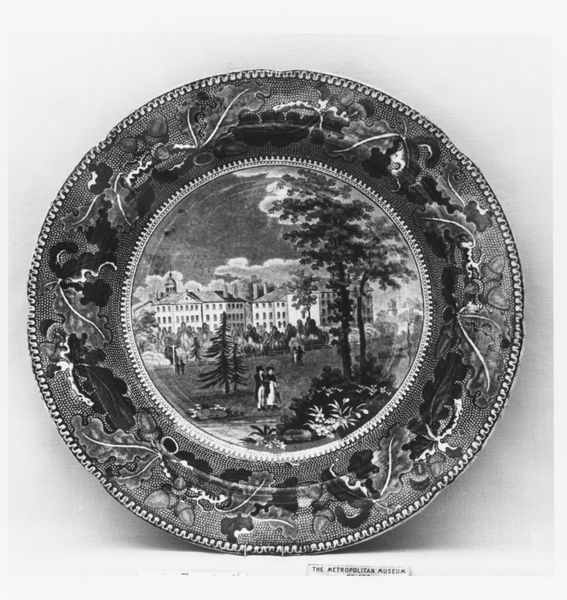
print, ceramic
# print
#
landscape
#
ceramic
#
geometric
#
romanticism
#
black and white
#
cityscape
Dimensions: Diam. 6 1/4 in. (15.9 cm)
Copyright: Public Domain
This plate, made by Job and John Jackson, likely in the 1830s, is made of earthenware with transfer-printed decoration. What’s interesting is that the ceramic body is relatively humble, but the applied image tries to elevate it. The pattern on the plate, with its classical building surrounded by floral decoration, isn't painted by hand. It’s been transfer-printed onto the surface. This process allowed for a more uniform, repeatable design, and was quicker and cheaper than hand-painting. The technique democratized access to decorative objects, but also speaks to the industrialization of the ceramic industry, and the division of labor in factories at the time. Consider the contrast between the refined aesthetic of the image and the industrial process of its creation. It speaks to the complex relationship between art, industry, and consumption in the 19th century, and challenges the traditional hierarchy between fine art and decorative craft.
Comments
No comments
Be the first to comment and join the conversation on the ultimate creative platform.
